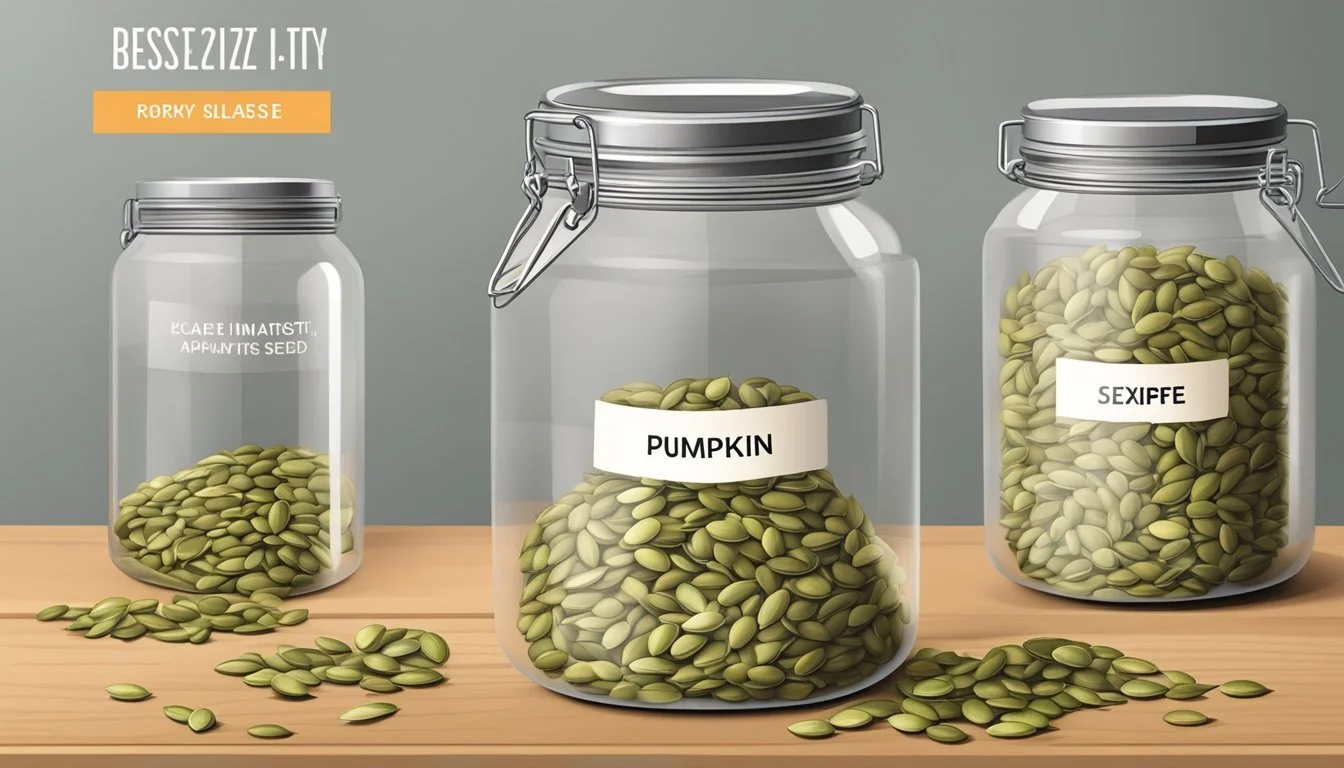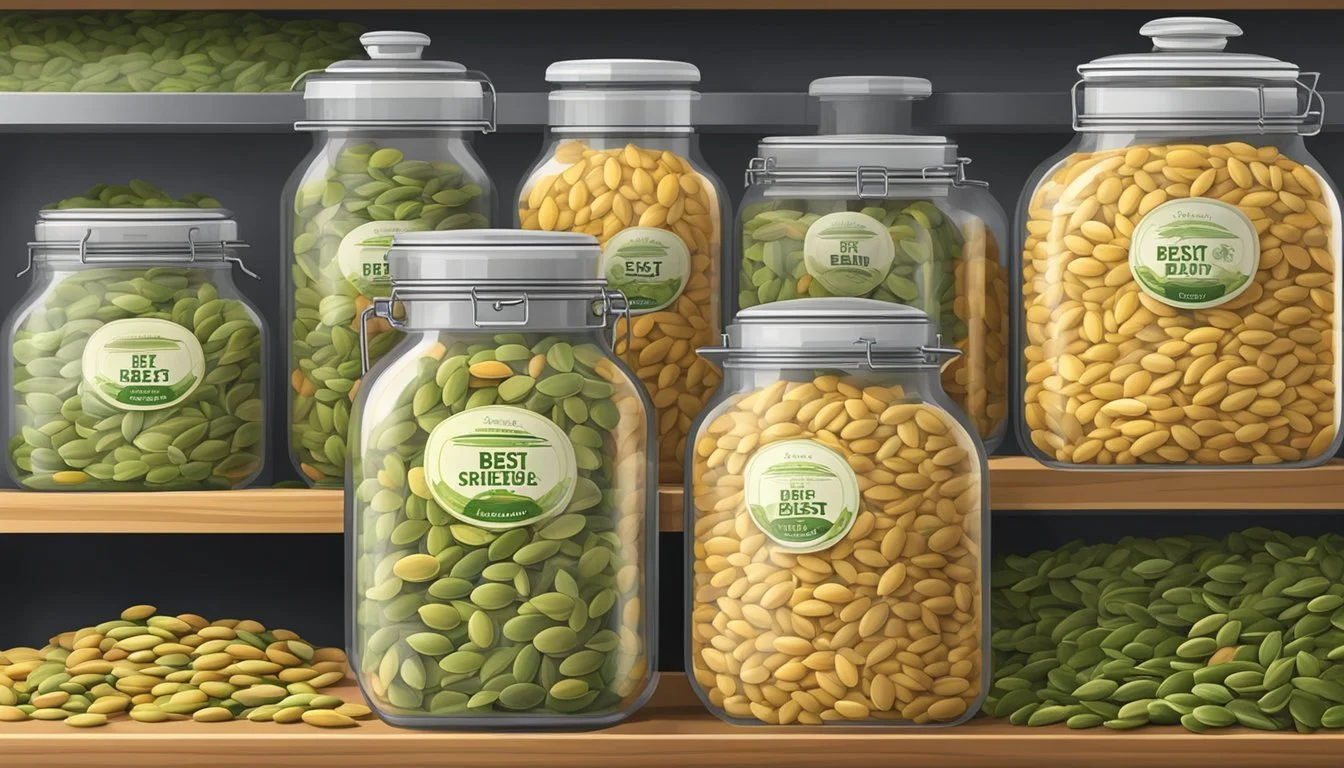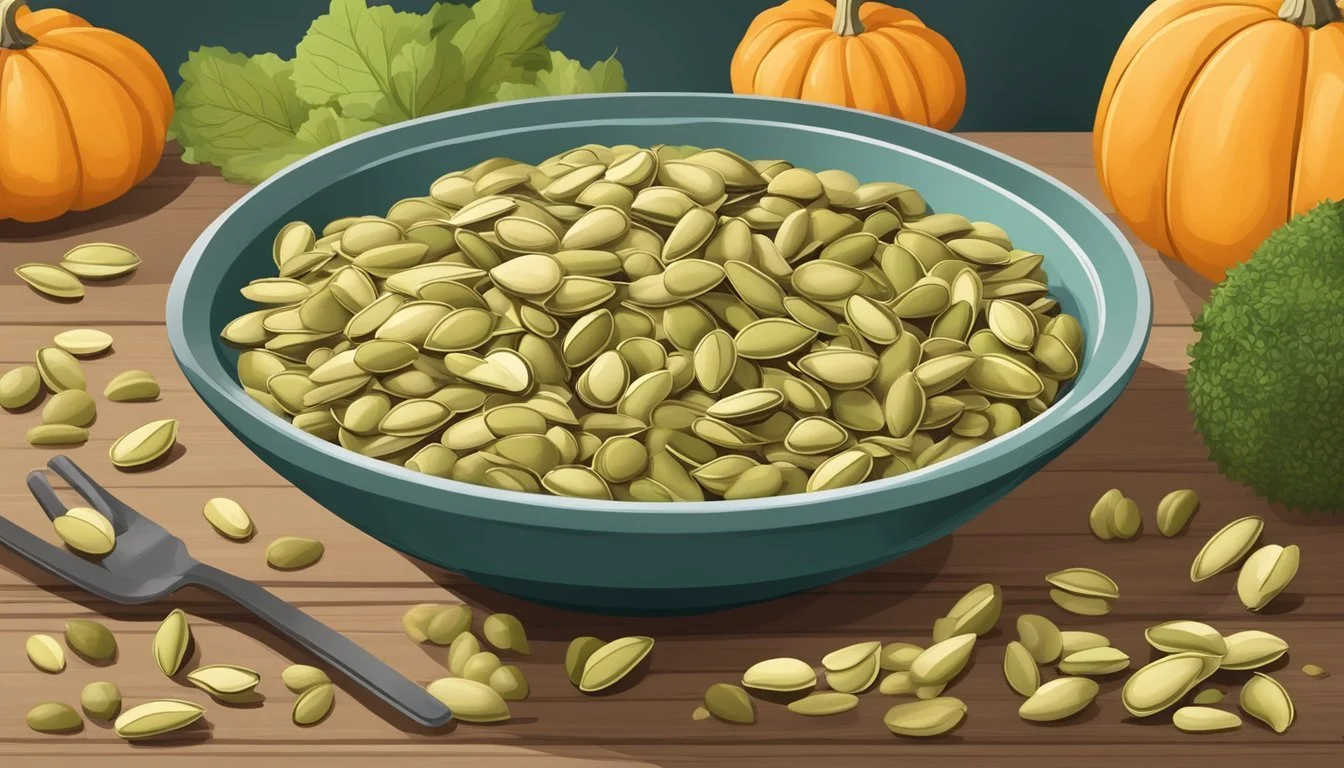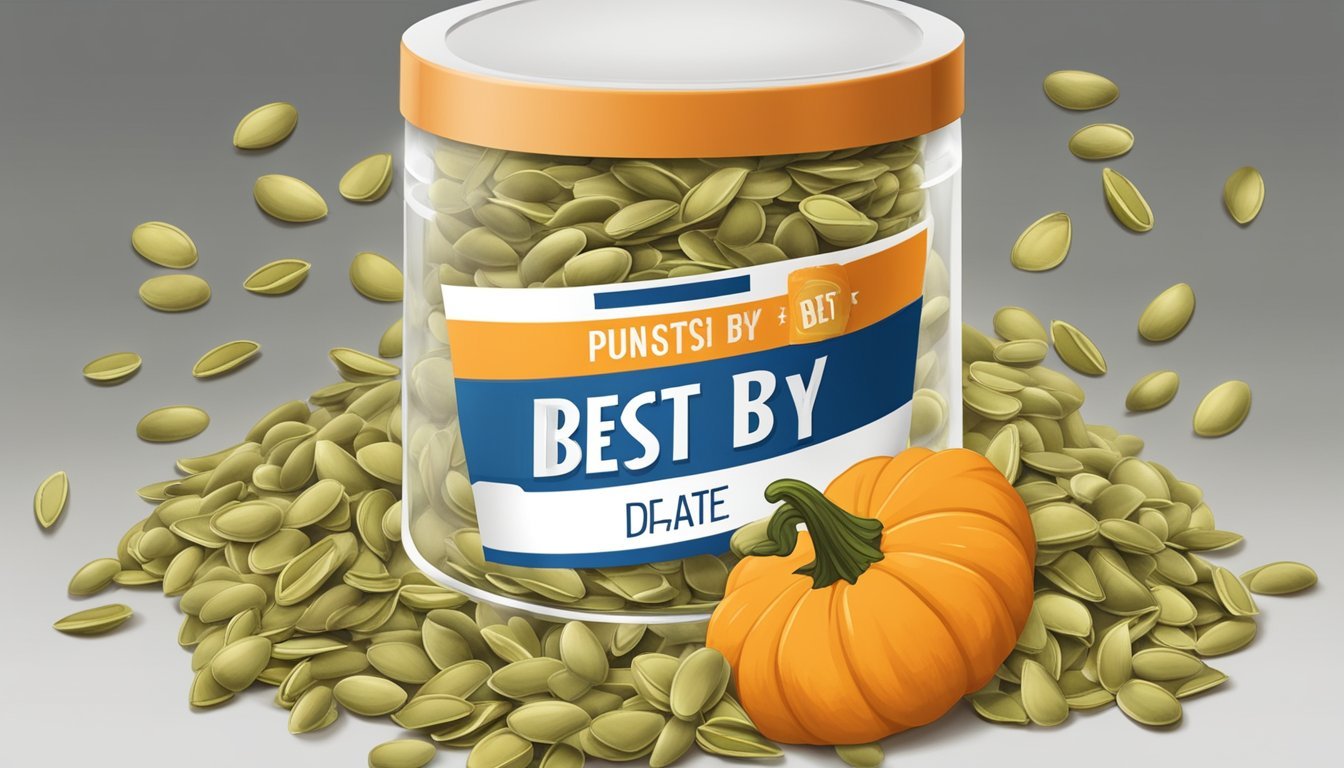Does Pumpkin Seeds Go Bad?
Key Signs and Storage Tips
Pumpkin seeds are a popular snack and ingredient in many dishes, appreciated for their rich nutritional value. They are packed with essential nutrients such as fiber, protein, magnesium, zinc, and antioxidants. These seeds are also a great source of healthy fats, iron, vitamins, and unsaturated fatty acids, offering a variety of health benefits for those who include them in their diet.
Pumpkin seeds do go bad, and understanding when they are no longer edible can save you from an unpleasant experience. While these seeds have a relatively long shelf life when stored correctly in a cool, dark place, they can eventually become rancid or develop mold. Indicators that pumpkin seeds have gone bad include off-smells and the growth of molds.
Consuming bad pumpkin seeds not only diminishes their nutritional value but can also pose health risks. By ensuring proper storage and paying attention to signs of spoilage, you can enjoy the maximum benefits of this nutritious snack.
Understanding Pumpkin Seeds
Pumpkin seeds, known as pepitas when de-shelled, are not only a tasty snack but also packed with essential nutrients. They come in various types and offer a range of health benefits.
Varieties and Nutritional Content
Pumpkin seeds can be consumed both raw and roasted. Raw pumpkin seeds are often shelled, revealing the pepita inside. Roasted varieties are popular for their enhanced flavor.
Organic and non-organic pumpkin seeds are available, and both can provide similar nutritional benefits. These seeds are rich in fats, proteins, and essential amino acids. Just 28 grams of roasted pumpkin seeds contain around 163 kcal, making them energy-dense. They also provide significant amounts of magnesium, zinc, and omega-3 fatty acids.
Health Benefits
Pumpkin seeds are celebrated for their numerous health benefits. They are a good source of antioxidants, which help combat oxidative stress. The seeds also support heart health due to their magnesium content.
Magnesium helps regulate blood pressure. Zinc, another essential mineral found in pumpkin seeds, supports immune function.
Additionally, the seeds have anti-inflammatory properties and may aid in managing diabetes. Their rich fiber content aids digestion and promotes a healthy gut. Regular consumption in moderation can contribute to overall well-being.
Factors Affecting Shelf Life
The longevity of pumpkin seeds largely depends on how they are stored, the temperature, humidity, and exposure to light.
Temperature and Humidity
Pumpkin seeds should be kept in a cool, dry place. Temperature plays a crucial role; heat can accelerate the rate at which seeds go rancid. Optimal storage temperatures are below 70°F (21°C). High humidity introduces moisture, which can lead to mold growth and spoilage.
Use of air conditioning or refrigeration can extend the shelf life. Airtight containers are recommended to maintain a stable environment inside, protecting the seeds from external humidity fluctuations.
Light and Exposure
Exposure to direct sunlight and artificial light can diminish the quality of pumpkin seeds. Light exposure speeds up oxidation, which leads to rancidity and a shorter shelf life. Opaque or dark-colored containers can shield seeds from light damage.
Storing the seeds in a cool, dark place such as a pantry or cupboard ensures they remain fresh longer. Keeping seeds away from windows and light sources prevents them from decaying quickly.
Storage Methods
The storage method directly affects the shelf life of pumpkin seeds. Vacuum sealing or using sealed airtight containers offers the best protection against environmental factors. For longer preservation, consider refrigeration or freezing, which can extend shelf life considerably.
Plastic bags with zip locks can also be used but are less effective than containers. Storing seeds in their shells can also slow down the spoilage process. Effective storage methods ensure seeds remain edible and nutrient-dense for a longer period.
Proper Storage Solutions
To maximize the shelf life of pumpkin seeds, it is essential to store them properly. Key methods include using airtight containers, keeping them in cool and dry places, and freezing them for longer preservation.
At Home Storing Techniques
Storing pumpkin seeds effectively begins with choosing the right container. An airtight container is crucial as it prevents moisture and air from reaching the seeds. This method keeps them dry, essential for maintaining freshness.
Choose airtight containers like glass jars or plastic containers with tight-fitting lids.
Store the containers in cool, dry places such as a pantry or kitchen cabinet away from direct sunlight. This prevents exposure to heat and light, which can cause the seeds to spoil faster.
For best results, keep pumpkin seeds in containers that are easy to seal after each use. This minimizes air exposure, keeping them fresh for up to two months.
Extending Shelf Life Through Freezing
Freezing pumpkin seeds is an effective way to extend their shelf life significantly. Before freezing, ensure the seeds are completely dry to prevent ice crystals from forming.
Use freezer bags or vacuum-sealed bags to store the seeds. These bags minimize air exposure, reducing the risk of freezer burn.
Label and date the bags to keep track of their freshness. Store them flat in the freezer to save space and make them easy to thaw.
Once frozen, pumpkin seeds can last for several months. When ready to use, they can be thawed at room temperature and enjoyed as if they were fresh. This method ensures you have a long-lasting supply of pumpkin seeds available any time you need them.
Signs of Spoilage
Spoiled pumpkin seeds exhibit specific signs that indicate they are no longer fit for consumption. Detecting these signs early can help prevent food poisoning and ensure you enjoy their nutritional benefits.
Detecting Rancidity and Mold
Rancid pumpkin seeds often give off a distinct smell. If the seeds emit a sour or rancid odor, they have likely gone bad. Mold growth is another clear indicator. Visually inspect the seeds for any discoloration or fuzzy spots, particularly a white or greenish growth.
Check the texture as well. Rancid seeds might feel sticky or oily. If you notice any unusual stickiness, it’s a sign they are no longer fresh. Always store seeds in airtight containers in a cool, dark place to prevent moisture buildup, which can lead to mold.
Changes in Taste and Smell
Taste and smell are critical indicators of spoiled pumpkin seeds. Fresh seeds will have a nutty and slightly sweet flavor. When they spoil, they can develop a bitter or off taste. Consuming seeds with an unpleasant taste can lead to food poisoning and should be avoided.
A rancid smell is another red flag. Spoiled seeds will emit an acrid or sour odor, different from their usual nutty aroma. If the smell is off, it’s safer to discard the seeds. These sensory changes are vital in determining whether the seeds are safe to eat or if they have started going bad.
Incorporating Pumpkin Seeds into Your Diet
Incorporating pumpkin seeds into your diet can boost your nutrient intake and add variety to your meals. Below are tips for roasting and preparing pumpkin seeds, as well as creative ways to use them in your culinary adventures.
Tips for Roasting and Preparation
When roasting pumpkin seeds, start by cleaning the seeds thoroughly to remove any pulp. Boil them in salted water for 10 minutes to enhance flavor, then dry them completely. Toss the seeds in olive oil or melted butter, and season with salt, paprika, or garlic powder.
Spread them evenly on a baking sheet and roast at 300°F (150°C) for 15-20 minutes, stirring occasionally, until they are golden brown and crispy.
Creative Culinary Uses
Pumpkin seeds can be used in an array of dishes. Sprinkle them onto salads for an added crunch, or mix them into your morning granola for a nutrient boost. They make an excellent topping for soups or can be blended into pestos.
Add a handful to baked goods like bread or muffins for extra texture. Use them as a snack on their own, or incorporate them into trail mix. For health-conscious eaters, pumpkin seeds are rich in protein and fiber, making them a good choice for weight loss and sustained energy.
FAQs on Pumpkin Seeds
Can you freeze pumpkin seeds?
Yes, pumpkin seeds can be frozen to extend their shelf life. Place the seeds in an airtight container or a heavy-duty freezer bag, and store them in the freezer. They should retain their freshness for several months.
How to store pumpkin seeds?
Store pumpkin seeds in an airtight container in a cool, dark place. The pantry or refrigerator works well. Ensure the container is sealed properly to avoid exposure to humidity.
What are pepitas?
Pepitas are the de-shelled inner part of pumpkin seeds. They are often eaten raw and used in salads, granola, or pesto sauce.
Can pumpkin seeds go bad?
Yes, pumpkin seeds can go bad. Their shelf life depends on how they are stored. Proper storage can extend their freshness up to 6 months.
What is the best method to roast pumpkin seeds?
Spread raw seeds on a baking sheet and roast them in an oven at 350°F for 10-15 minutes. Stir occasionally until they are golden brown. You can add ingredients like salt or sugar to enhance the flavor.
Can you get food poisoning from pumpkin seeds?
If pumpkin seeds are stored improperly and become moldy or contaminated, they can cause food poisoning. Always check for signs of spoilage before consuming.
What is the difference between natural pumpkin seeds and flavored ones?
Natural pumpkin seeds are typically unsalted and raw, while flavored ones may have added ingredients like salt, sugar, or various spices for enhanced taste.
Is there an expiration date for pumpkin seeds?
Pumpkin seeds often come with a best-by date, which indicates optimum freshness. They may still be safe to eat beyond this date if they are stored properly and show no signs of spoilage.
How does humidity affect the freshness of pumpkin seeds?
High humidity can cause pumpkin seeds to become moldy or rancid. To maintain freshness, keep the seeds in a dry environment, such as an airtight container.
Can you thaw frozen pumpkin seeds?
Yes, frozen pumpkin seeds can be thawed. Remove them from the freezer and allow them to reach room temperature before using them in recipes or eating.
Health Considerations and Benefits
Pumpkin seeds are not only nutritious but also offer significant health benefits. They are rich in essential nutrients that can prevent various diseases and aid in weight management.
Pumpkin Seeds and Disease Prevention
Pumpkin seeds are packed with antioxidants such as vitamin E and carotenoids, which play a critical role in fighting free radicals. These antioxidants help reduce the risk of diseases like cancer and heart disease.
High levels of magnesium found in pumpkin seeds support heart health by maintaining healthy blood pressure levels and reducing the risk of heart disease. The seeds are also an excellent source of unsaturated fatty acids, such as omega-3 and omega-6, which can help lower cholesterol levels, further promoting cardiovascular health.
Because of their nutrient density, pumpkin seeds aid in reducing inflammation and improving bladder and prostate health. They offer a balanced mix of essential vitamins and minerals that contribute to overall well-being.
Weight Management and Satiety
Pumpkin seeds can be an excellent addition to a weight-loss diet. A serving of approximately 28 grams (1 oz) contains about 160 calories and provides a good amount of fiber and protein. These elements ensure that the individual feels full for a longer duration, reducing the urge to snack frequently.
The high content of fiber in pumpkin seeds promotes digestive health and aids in weight management by enhancing feelings of fullness. The presence of unsaturated fatty acids in these seeds contributes not only to heart health but also to a balanced diet necessary for effective weight management.
Incorporating pumpkin seeds into meals can help regulate metabolic processes and support sustained energy levels, making it easier to maintain a healthy weight.
Comparing Pumpkin Seeds to Other Seeds
When comparing pumpkin seeds to other seeds, it is apparent that each type offers unique nutritional benefits.
Pumpkin seeds are rich in protein, fiber, and essential minerals such as magnesium and zinc. A 1-ounce (28 grams) serving includes:
Sunflower seeds have a higher fat content, particularly healthy fats like monounsaturated and polyunsaturated fats. They also provide more calories and protein per serving. Nutritional values for a 100-gram serving include:
Total Fat: 51.5 grams
Protein: Higher than pumpkin seeds
Calories: Higher than pumpkin seeds
Vitamin E
Omega-6 fatty acids
Chia seeds are another nutritious option, delivering a high amount of fiber and Omega-3 fatty acids. For a 1-ounce serving, chia seeds contain:
Fiber: Significant amount
Omega-3 fatty acids
Calcium
Magnesium
Here's a comparison table for clarity:
Nutrients Pumpkin Seeds (100g) Sunflower Seeds (100g) Chia Seeds (100g) Protein 10 grams Higher Lower Total Fat 19.4 grams 51.5 grams 31 grams Calories Moderate High Moderate Fiber 1.5 grams Moderate High Magnesium High Moderate High Zinc High Moderate Low Vitamin E Moderate High Low Omega-3 Low Low High Omega-6 Low High Moderate Calcium Low Low High
Pumpkin seeds stand out due to their higher magnesium and zinc content. In contrast, sunflower seeds excel in vitamin E and healthy fat content. Chia seeds are notable for their high fiber and Omega-3 fatty acids. Each seed type offers distinct health benefits, making them valuable additions to a balanced diet.









